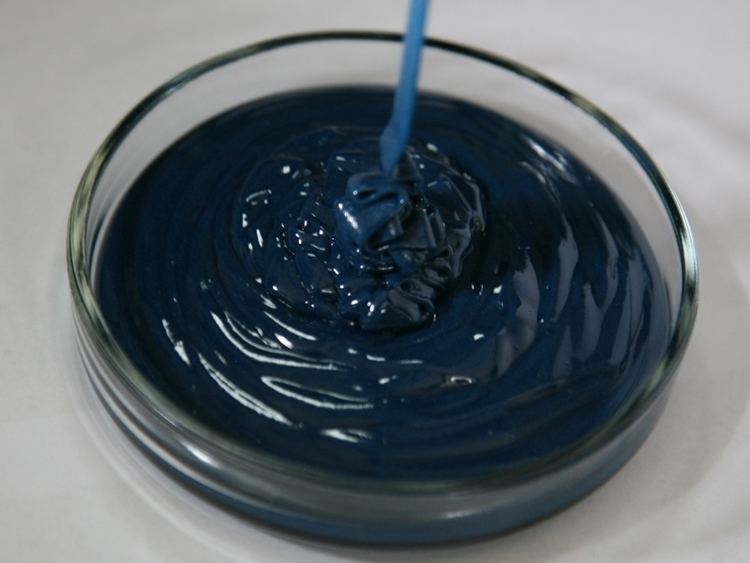 | ||
Plastisol is a suspension of PVC particles in a liquid plasticizer; it flows as a liquid and can be poured into a heated mold. When heated to around 177 degrees Celsius, the plastic and plasticizer mutually dissolve each other. On cooling the mold below 60 degrees C, a flexible, permanently plasticized solid product results. Aside from molding, plastisol is commonly used as a textile ink for screen-printing and as a coating, particularly in outdoor applications (roofs, furniture) and dip-coating.
Contents
Textile ink
Plastisol is used as ink for screen-printing on to textiles. Plastisols are the most commonly used inks for printing designs on to garments, and are particularly useful for printing opaque graphics on dark fabrics.
Plastisol inks are not water-soluble. The ink is composed of PVC particles suspended in a plasticizing emulsion, and will not dry if left in the screen for extended periods. Because of the convenience of not needing to wash a screen after printing, plastisol inks can be used without a source of running water. Plastisol inks are recommended for printing on colored fabric. On lighter fabric, plastisol is extremely opaque and can retain a bright image for many years with proper care.
Plastisol inks will not dry, but must be cured. Curing can be done with a flash dryer, or more inexpensively, a home oven. Most plastisols need to reach a temperature of about 180 degrees Celsius (350 Fahrenheit) for full curing. Plastisol tends to sit atop the threads instead of soaking into them, giving the print a raised, plasticized texture. Other inks can produce a softer feel.
Slush molding
Plastisol is used for slush molding or slush casting, a form of spin casting that is more complex than relatively simple resin casting, but less expensive and less sophisticated than the injection molding used for most plastic products. It involves metal molds that are filled with liquid plastisol. When the open mold cavities are filled, the mold is spun on a heavy duty, high speed centrifuge to force the liquid vinyl into all of the fine detail on the interior of the mold. Then the metal mold is placed into a heating solution, usually an industrial salt heated to about 204 °C (400 °F). The liquid vinyl cooks for a few seconds. The mold is then removed from the heating solution and the remaining liquid is poured out. This leaves a thin skin of vinyl on the interior of the metal mold. The mold is then placed back into the heating solution for three to four minutes to cure. After curing, the mold is again removed from the heating solution, cooled with water, and placed on a rack. While the vinyl part is still warm in the mold, it is very flexible and can be removed from the mold with pliers. When the parts cool, they become rigid and are ready for assembly.
The metal molds can produce an unlimited number of castings. Unlike the flexible molds used for resin casting, metal molds are not adversely affected by heat. The metal molds allow grouping of several parts in one mold cavity and several mold cavities in one mold for faster production.
Solid rocket boosters
Plastisol process is used to bind polymer with metallic or metalloid agent and a liquid oxidizer, creating Electric Solid Propellant. This substance can be ignited and extinguished by electric impulse, providing pulsed rocket propulsion. With achievable pulse frequency reaching 60Hz (60 ignition/extinguishing cycles per second), thrust of such boosters can be finely controlled; combined with possible minuscule dimensions, safety and low complexity it makes them usable as RCS thrusters of nanosatellites like the CubeSat.
